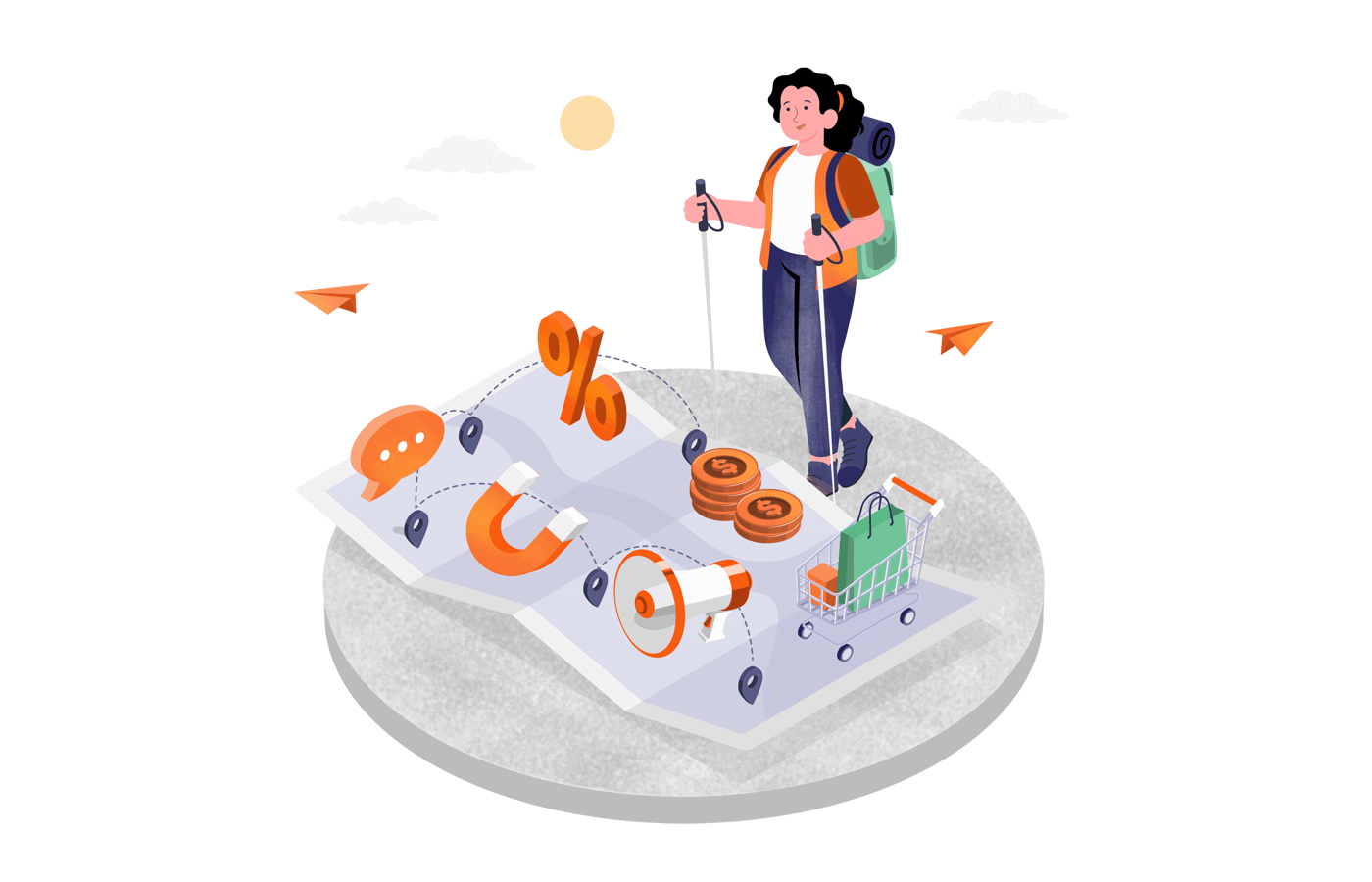So, you want to increase conversion rates? And you no doubt want to turn potential customers into loyal ones. That is the aim of the business game, after all.
What you need, then, is an email marketing strategy. But not just any old strategy. You need one that’s built around the customer journey.
That means considering every step customers take when they make a purchase. From there, you can tailor emails to each stage.
Of course, mapping out an email marketing customer journey is easier said than done, let alone ensuring that journey leads to your end goal of making sales. That’s where our essential guide for conversion comes to the rescue.
We’ve rounded up the key benefits of email marketing, laid out each customer journey stage in more detail, and thrown in some email examples to inspire you. Let’s dive in!
Setting the Stage for the Customer’s Journey
No one sets off on a journey without a bit of a plan. Booking flights, downloading maps, researching restaurants – these are all part of the planning process. And they’re essential if you want to enjoy every moment of your travels, right?
Think of the customer journey in a similar way. Set the stage for the customer so that each step of their journey will be seamless, painless, and even enjoyable.
So how do you know what your customer’s journey with your business currently looks like? One word: analysis.
Analyzing each stage will give you a clear picture of how customers behave, what influences the decisions a customer makes and what might inspire new subscribers to becoming paying customers.
Keep in mind there are four types of customer journeys. Before you begin analyzing, you need to define which one you’re mapping out. These include:
- Service journeys: A linear process where a customer is simply trying to get from one end to the other, for example, returning an order.
- Experience journeys: A broader linear journey that dives into how customers feel when they interact with your brand or website.
- Decision journeys: People constantly to and fro before making a decision. Analyzing data will show at what point people make a decision one way or the other.
- Life journeys: Consider the different phases in people’s life and look how this influences their interactions.
Try to understand how your customers think and feel at each stage and analyze the relevant data. This will help shape your email marketing customer journey map.
More importantly, it helps you influence people’s decisions so you convert them into paying customers.
Why Email Marketing is Crucial for the Customer Journey
In the world of ecommerce marketing, it’s easy to be distracted by every new trend. Should you be using AI for text messages? Is that new social media platform as amazing as it sounds?
Amongst all the hype, the humble email stands with its head held high. Email remains one of the most effective channels for marketers to increase lead conversions and customer retention.
Looking for an email marketing platform that’s not only loaded with cool features but also super easy to use? Sender’s drag-and-drop email design builder is like magic – making newsletter creation a total piece of cake.
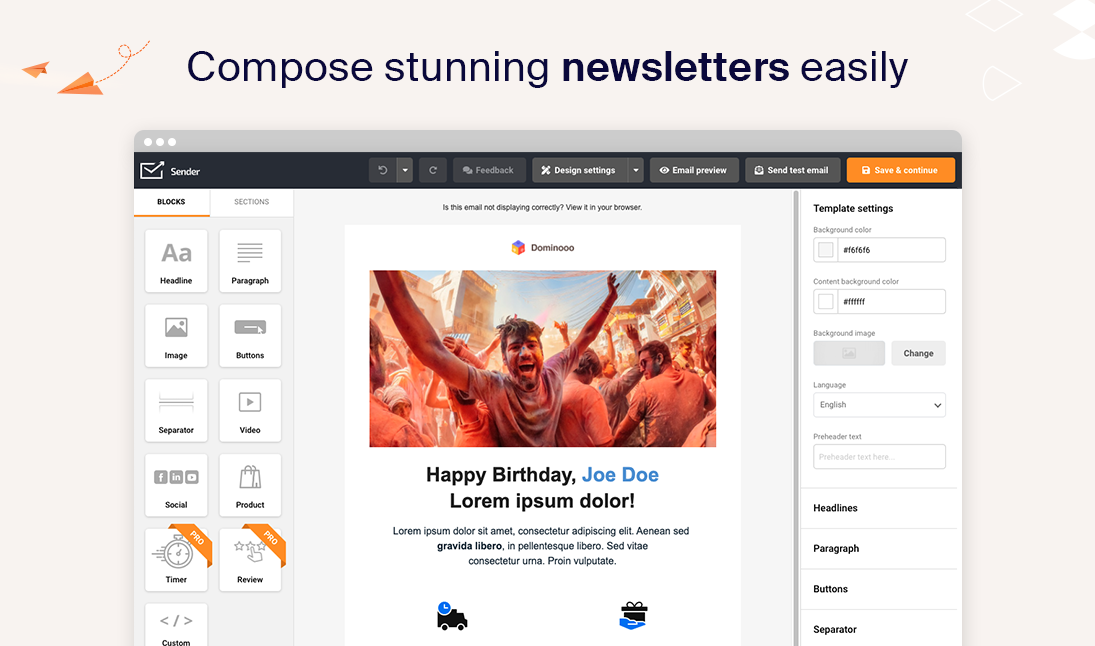
Why? Let’s look at some of the main reasons it works so well for the customer journey.
Personalized Customer Experience
Personalization. Personalization. Personalization. That’s what it’s all about in today’s ecommerce world.
And email marketing offers it in droves. If you’re collecting the right customer data, you can send personalized emails to cross sell products based on historic purchases. Or give them a nudge if they’ve abandoned their cart. What all this means is that you can adapt your marketing to every customer’s individual journey.
Strengthening Brand Loyalty
Every company wants a horde of loyal customers. After all, existing customers are easier to sell to as they’re already convinced by what you offer. Plus, holding on to an existing customer significantly reduces your acquisition costs.
Email marketing can help you establish and build brand loyalty. At the start of the customer journey, messaging introduces customers to your brand ethos and values. Then sending regular emails throughout the customer journey will cement these values and increase brand visibility.
Emails can also be used to reward a loyal customer — because everyone knows an exclusive discount can go a long way.
Modern-Day Email Marketing
Like we said, data is powerful. Today, successful email marketers use that data to create more impactful campaigns. If the messaging is tailored to people’s behavior and interests, they’re more likely to engage with it. This Playstation’s email is the perfect example.
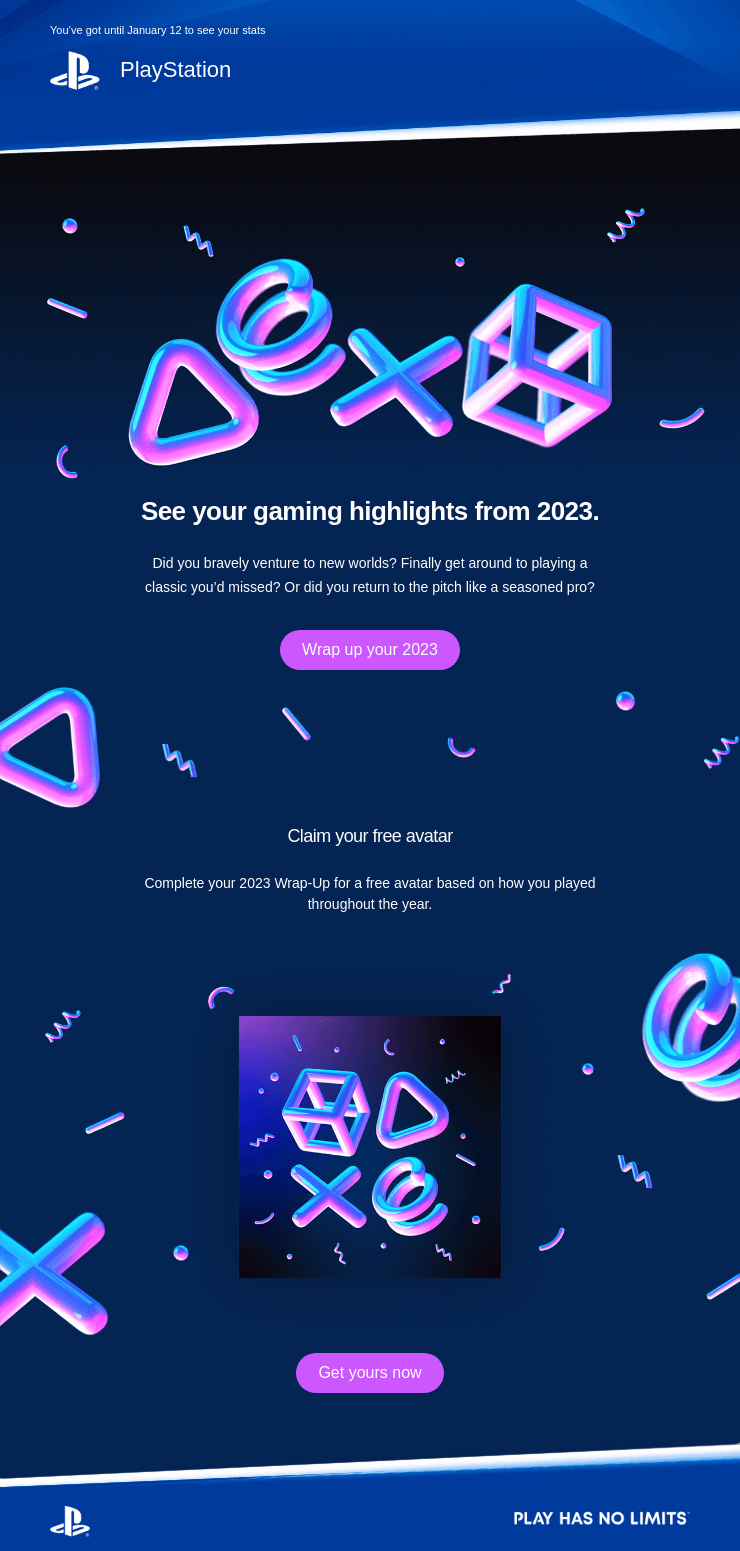
Modern campaigns also make the most of email automation. When you have access to software that can take things off your plate by sending automated emails at precisely the right time to precisely the right people, why wouldn’t you?
Using automated email campaigns throughout your customer journey gives you the best chance of increasing conversion rates. You can automate various messages, including emails sent throughout the customer onboarding cycle, welcome emails, abandoned cart, and birthday emails with exclusive discount codes.
Stages of Customer Journeys
As with any map, a customer journey map should include different locations from the marketing perspective. To help you pinpoint them, we’ve detailed the four stages of email marketing customer journey mapping below.
Awareness
This is where you make your first impression on the customer, so make it count! It’s a jumping-off point for your emails, so think about how you’ll encourage people to engage.
Of course, you’ll need an email sign-up form or some other way of collecting email addresses. But don’t forget about other data that could prove useful later down the line. Birthdays, hobbies, interests, location — these are all valuable nuggets of information.
Remember, at this stage of their journey, customers now know about your brand and you’ve piqued their interest. Otherwise, why would they sign up for your newsletter? Use that to your advantage like Feed Organic has done in the example below.
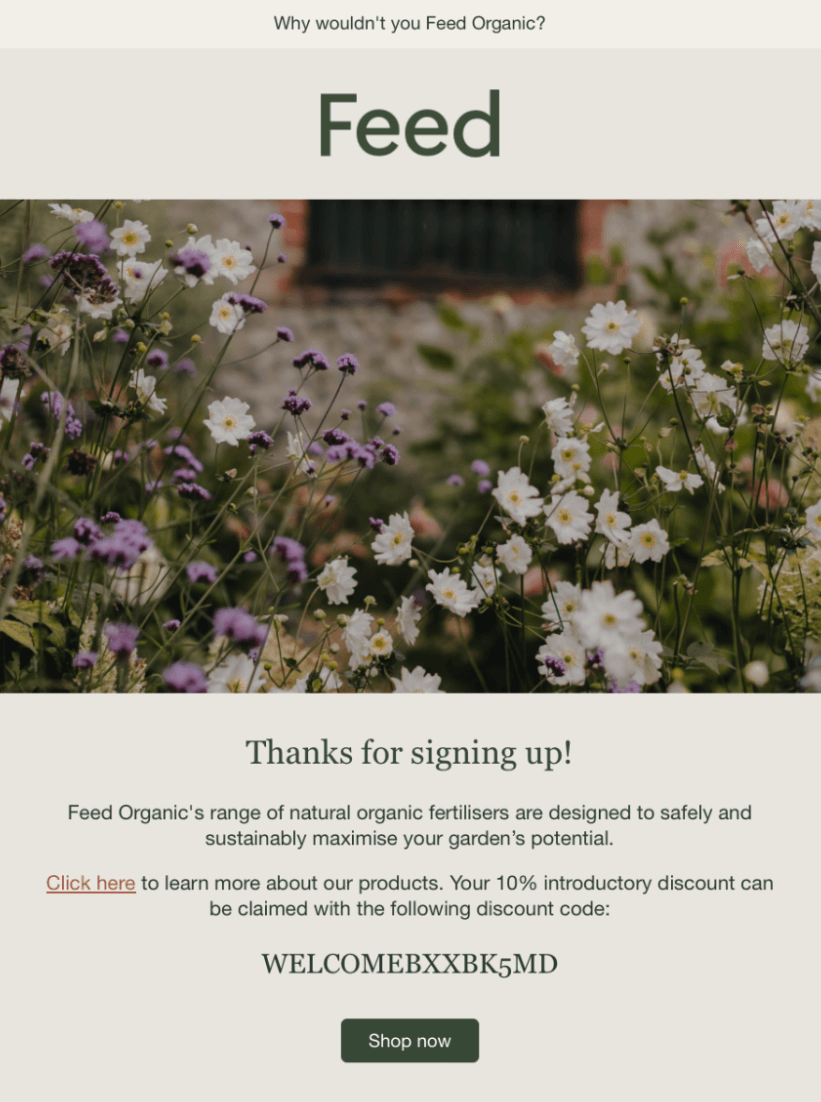
Consideration
A crucial point for your campaign and customer journey mapping, this is the stage when the customer is thinking about making a purchase from you. They might need a little gentle persuasion, which is where your emails come in.
Remember, the ultimate goal is to convert them. Consider including customer testimonials to create social proof and build trust. This will make prospective customers feel like they’re missing out by not doing business with you.
Decision
X marks the spot. Your customer has come to the decision stage of the journey, so it’s a pivotal moment for your business. Will they stop and make a u-turn never to come back? Or will they give your business the green light and hit that all-important BUY button?
Chances are you’ll need to send a few different emails at this point. Cart abandonment emails prompt customers to complete their purchase. These might be a simple reminder of what they’ve put in their basket, as per the below examples.
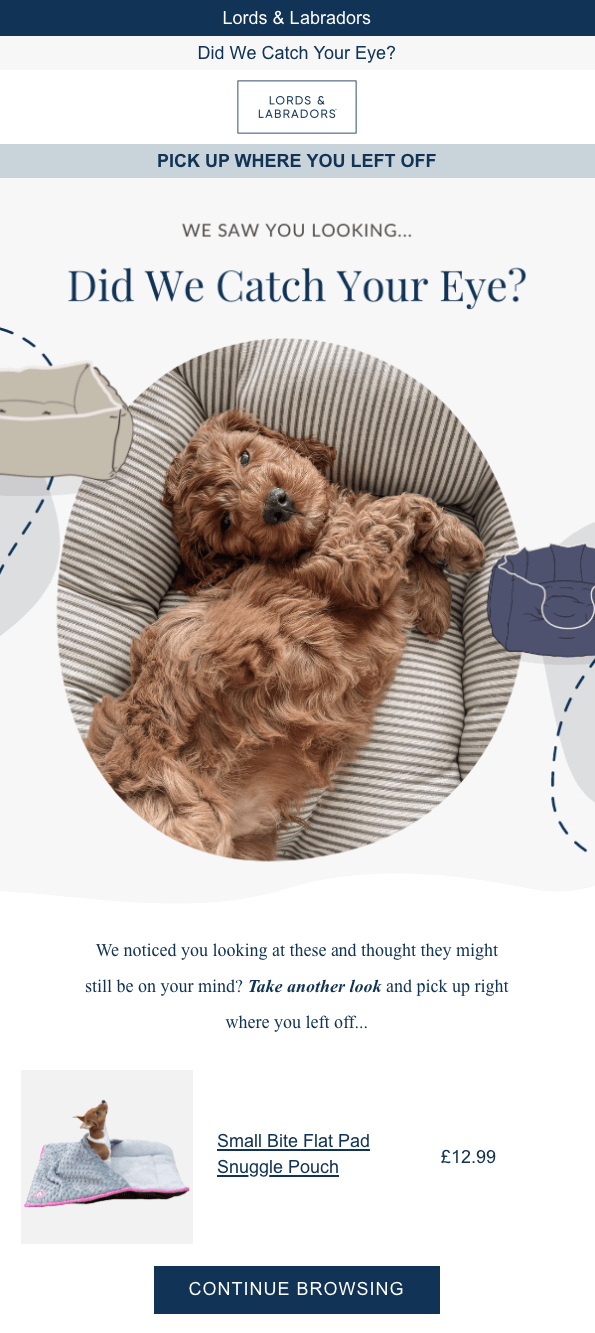
Alternatively, you can create a sense of urgency by saying how many items are in stock. These emails will be even more enticing when accompanied by a limited-time discount.
Then there are transactional emails. Don’t forget to thank customers for their purchase and give them additional information like tracking details or estimated delivery date.
Post-Purchase Engagement
The customer journey map doesn’t (and shouldn’t) end with the purchase. Because it’s one thing to convert a customer, but it’s another to keep them loyal. You never know, this could lead to even more conversions. So if you care about retaining customers, which you should, you need a customer retention strategy.
As well as sending thank you emails, you could send tutorials or personalized product recommendations in the weeks after a purchase. The idea is to keep customers engaged throughout their journey with you.
Continuously remind them that you’re here, your products are amazing, and you have what they’re looking for. As a result, they’re more likely to keep your brand in mind when they want to make a purchase.
Crafting the Perfect Email for Every Journey Stage
Now that you know the different stages of the customer journey, it’s time to adapt your email marketing campaigns to your customer journey map. These are our key principles to keep in mind when crafting the perfect email for each customer journey mapping stage.
Engaging Content for Awareness
When your customers are in the awareness stage, engaging content will work wonders. Think of this stage as the first chapter in a book or the first scene in a film — it needs to hook the customer or they’ll end up going elsewhere.
The goals at this point are lead generation and data collection. So think about how you can create engaging content that will result in winning emails from different sources. Blog posts, social media infographics, podcasts, videos — these are all great ways to spread awareness about your brand and help potential customers get to know you.
Consider their experience and journey on your website, too. How can you improve the website design and interface so that they have a positive user experience from the get-go?
If they can easily navigate your site and find what they’re looking for, you’ll have made a great first impression. From here you can use pop-ups to encourage them to sign up to your newsletter with the promise of brand updates, exclusive access to product launches, seasonal discounts, and so on.
Personalized Touch for Consideration
When your customers are in the consideration stage, your marketing materials need to grab their attention. Personalization is the power of persuasion, so make your messaging as personalized as possible.
As we mentioned, this is where data comes into its own. But you could also use an AI customer service tool to find out more about individuals. You can then use this info to segment customers into different email lists, and tailor messaging around different products and values based on categories like customers’ demographics.
Even basic personalized touches are really useful here — start your emails with customers’ names to develop a more personal relationship. This is true throughout the different stages after awareness, so try to incorporate it wherever you can.
Enticing Offers for Decision Making
When customers are in the decision stage of their customer journey map, sometimes all it takes for them to make a purchase is an enticing offer. Send emails with offers about free trials or discounts to get customers to choose your brand over a competitor.
Bamboo clothing company BAM sends offers based on items people have recently added to their basket to encourage conversions.
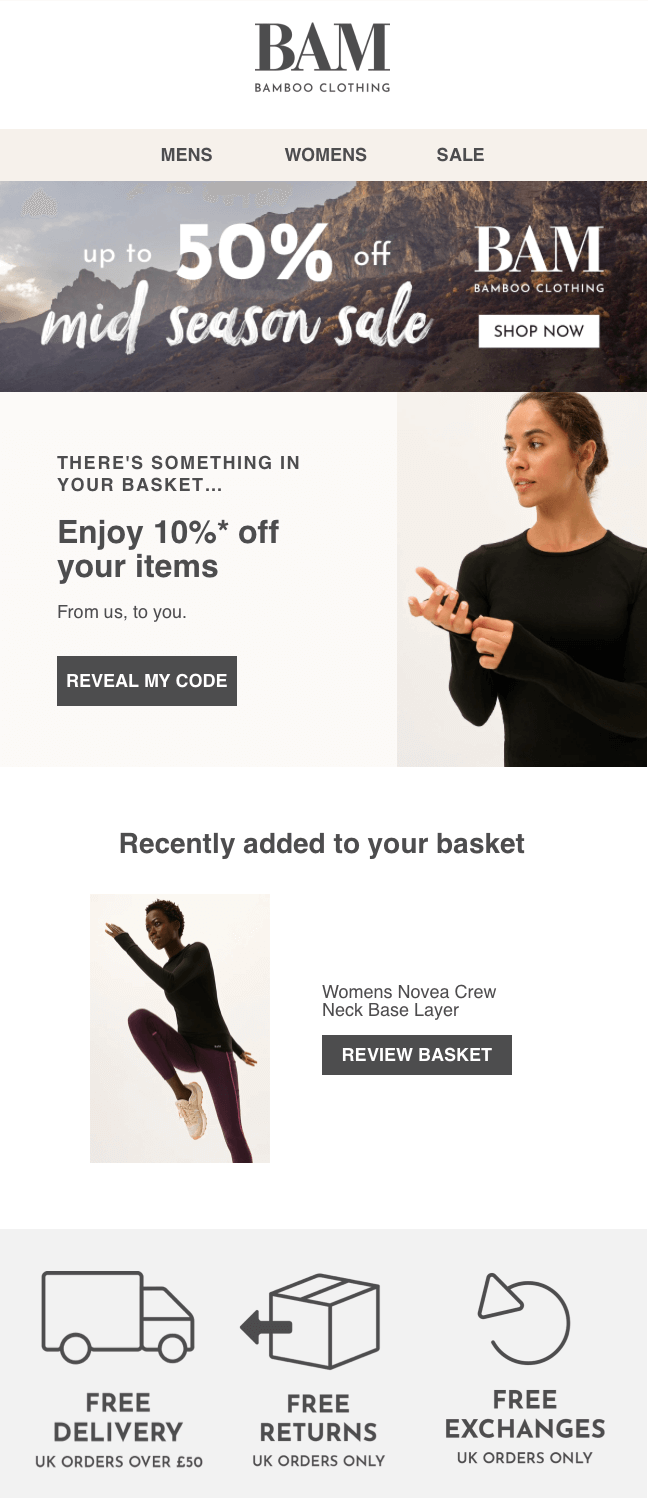
If you want these emails to be especially effective, include a CTA (call-to-action) that encourages customers to make the purchase. You could also make your discount or free trial time-limited so that customers would feel under pressure to take advantage of the offer.
Tracking and Measuring Success
As with any marketing campaign, you’ll need to know what parts of your email marketing strategy are working or not. After all, how else can you even begin to make improvements? It’s just one reason why tracking and measuring success is so important.
Key Metrics to Consider
Here are the key metrics to keep in mind when evaluating the success of your customer journey mapping:
- Open rate. This refers to the percentage of people who received an email and opened it. If your emails appear engaging and have interesting subject titles, this will be higher.
- Click-through rate. Click-through rate is when a potential customer clicks on the link or button in your email. This will usually mean that they click through to your main website.
- Conversion rate. Increasing your conversion rate is the ultimate goal of everything that your email campaign does. It refers to the percentage of customers who take the desired action in your email, such as making a purchase or confirming a subscription.
Common Pitfalls and How to Avoid Them
In your email marketing strategy, it is easy to make little mistakes that have a big impact. You wouldn’t be alone either — there are many common pitfalls that could put off customers rather than persuade them to carry on through their journey. Here are some common ones:
Spamming Customers
We get it: securing new email subscribers is exciting. It’s tempting to send them a slew of emails about your brand mission, founding team, top-selling products, upcoming sales… The list goes on.
But there’s a difference between engaging your subscribers and bombarding them. So make sure you find the sweet spot. Send just the right amount of emails to keep their attention, and focus on genuine offers and messages, much like the example below.
But wait, we hear you ask. How do I know what the “right number” is? Great question. There is no magic answer to that question, nor is there a one-size-fits-all approach to email marketing. However, this is where the earlier process of analyzing your customers’ journey will help.
Of course, you should have a standard welcome cycle for new subscribers. But you also need to consider what information, support, or encouragement they need throughout their journey. Then, consider what emails you can send to help them gather more information, make decisions, complete transactions or returns, or even offer feedback.
It is recommended to send an email at least once a month, but use this as a rough guide. Research shows that marketers actually send email marketing campaigns weekly or even several times a week.
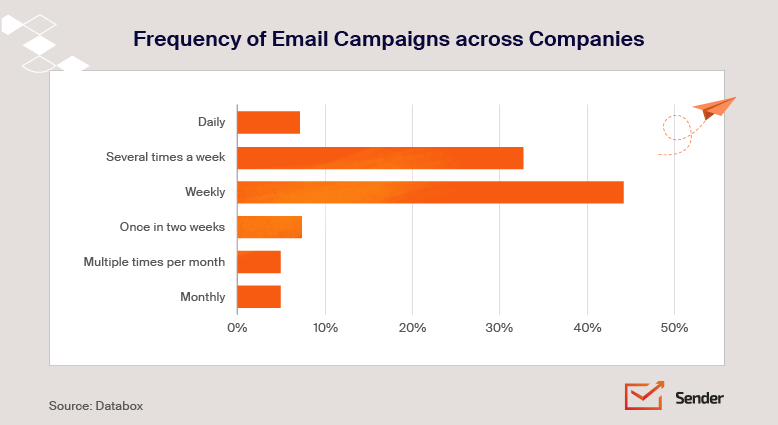
So figure out a frequency that works best for you and your customers. Adapt your schedule to the stage of the customer journey map that your customer is on. And remember that send frequency is likely to ramp up around promotional periods like Black Friday or Valentine’s Day, so plan ahead.
Using Misleading Subject Lines
Crafting an engaging email subject line is a great way to encourage recipients to open your email. However, these should never be misleading or overly gimmicky. You don’t want customers unsubscribing or marking emails as spam, do you?
Misleading subject lines often overuse capitalization, punctuation, and emojis as well as trigger words and phrases, such as:
- “Earn”
- “Free”
- “Get Paid”
- “Lose Weight”
- “No Catch”
- “Money Back”
- “Limited Time”
- “The Best”
Including any of these tactics is likely to result in your email being sent straight to spam. On top of this, avoid misleading, vague, or over exaggerated subject lines that might cause confusion or even anger.
For example, a subject line like Out of Office! might feel creative for an email marketing campaign promoting summer holiday must-haves. But this can cause your email to be filtered to spam or confuse customers that do open it.
Similarly, subject lines that start with RE: can be seen as a deceptive way of tricking customers into thinking they already have an ongoing email chain with the sender.
If you make sure your subject lines are always relevant to the content and your brand, you’ll be in good shape.
Also read: Email Subject Lines Capitalization
Not Updating Your Email List
Effective email list management is essential. You need a process or tool that ensures your list of leads is always up-to-date and relevant. This means your personalization efforts will be more effective, plus it guarantees you aren’t sending emails to people who have unsubscribed.
Forgetting about Optimization
Does your email look just as great on a phone as on a PC? What about tablets?
Failing to optimize viewing means that customers will simply delete emails that are difficult to read on the phone, leading to thousands of missed potential conversions. If you’re unsure of what to change, you could use customer feedback to improve optimization.
Not Implementing DMARC for Email Authentication
DMARC helps prevent phishing and email spoofing by telling email recipients about the legitimacy of the sender’s domain. Make sure to configure DMARC settings for your domain to enhance email security and protect your customers from phishing attempts.
In addition to avoiding the above common pitfalls, make sure you generally strive to maintain standards in your email marketing. Explore some tips for email etiquette and you’ll be on your way to a high level of professionalism and engagement.
Key Takeaways: Mastering the Email Marketing Landscape
If you want to master your email campaigns, you need to be able to adapt your email strategy to customer journey maps. By dividing your customer journeys into the different stages that we’ve highlighted in this article, you’ll be able to personalize your messages so that customers are engaged.
Here are few key takeaways to help you get started in your email marketing customer journey strategy:
- There are four stages in the customer journey: Awareness, Consideration, Decision, and Post-Purchase Engagement;
- Analyzing the customer journey will help you understand how customers think, feel, and act during each stage;
- Email marketing is a powerful tool for moving new customers along your sales funnel, helping to increase engagement and ultimately convert them into loyal customers.
- Effective email campaigns deliver a personalized experience, foster trust and loyalty, and make the most of data and automation;
- Creating engaging content, offering exclusive discounts, and providing social proof can all convince potential customers to make a purchase;
- Common pitfalls to avoid include: sending too many emails, using misleading subject lines, not updating your email list, failing to optimize content, and not authenticating your email domain.
Without considering customer journeys, your customers will simply receive emails that are irrelevant and head straight for the trash folder. Start using customer journey mapping to elevate your email marketing today!
Also here: How to Build Email Marketing Funnel: Best Strategies, Templates


